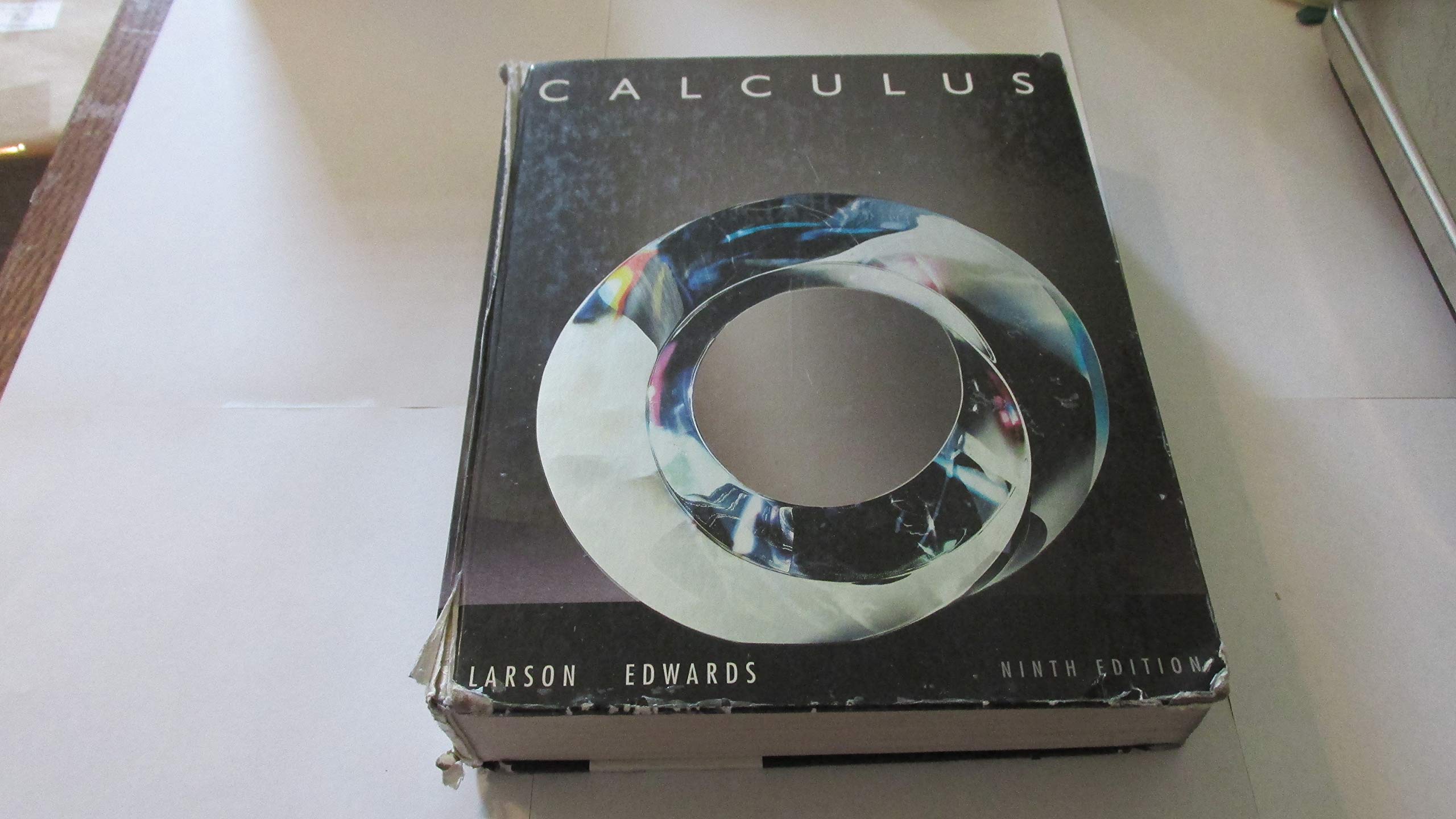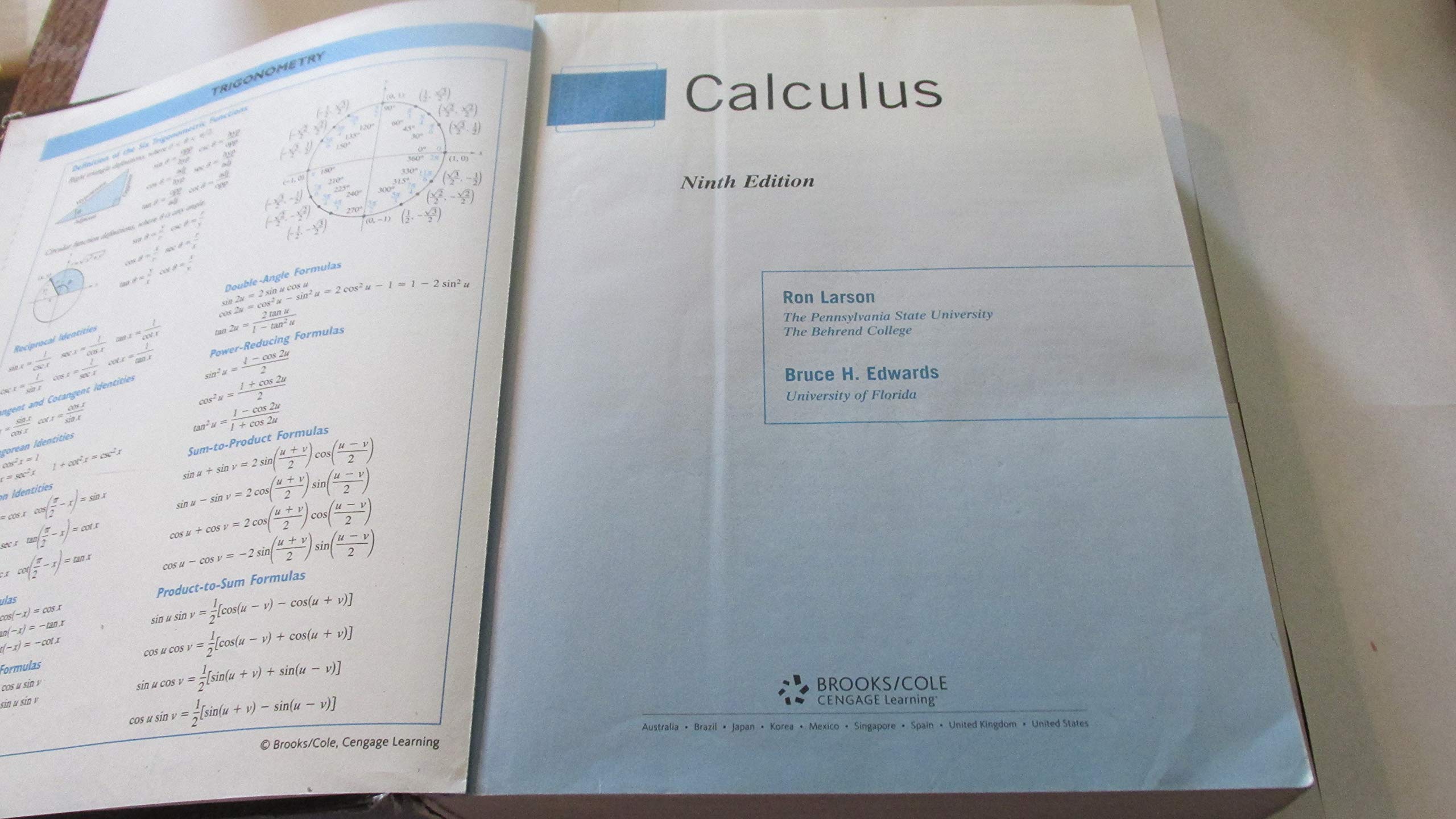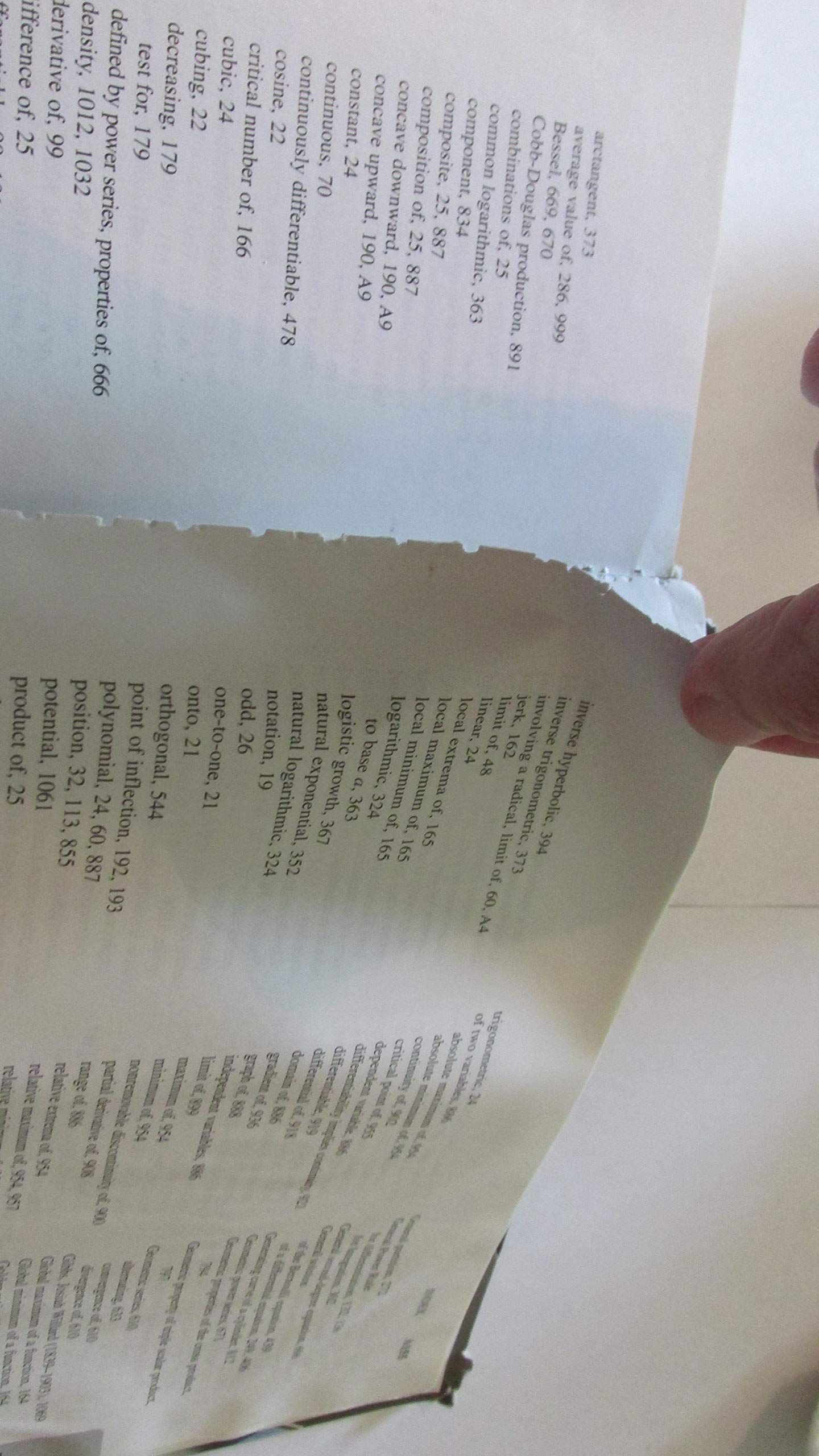






Full description not available
L**G
A wonderful contribution to mathematics education
This isn't an expert review, because I am not a mathematician. I am a research scientist and in some of my work, I use physical methods that have a calculus-based theoretical foundation. I’ve always been interested in applied mathematics and like to understand the derivations that appear in textbooks and the literature. As an undergraduate majoring in chemistry, I had three semesters of calculus, a semester of linear algebra, two semesters of applied mathematics for chemists and a semester of calculus-based statistics. Back then (many years ago), the standard calculus textbooks were arguably not as good as they are today. The calculus book I had for the first two semesters by Johnson and Kiokemeister was horrible. The book I had for the third semester by Purcell, which covered multivariable calculus, was better, but in retrospect, not great. Overall, I would say as an undergraduate, although I was really interested in calculus, but not particularly talented mathematically, I was pretty uncomfortable with my command of the subject.I returned to calculus several times over the years to review topics that I would encounter, e.g, Taylor series and total differentials. It is interesting, at least in my experience, most professional scientists in biomedical research never return to calculus or other subjects in mathematics. In fact, I don’t know anyone who has picked up a math book and sat down to study a subject and work problems.I bought the 9th edition of Larson and Edwards in 2010, primarily because I was studying applications that required an understanding of multivariable calculus. So I started with the chapter on Conics, Parametric Equations and Polar Coordinates and over several months worked my way through to the end of the book, working about half of the odd numbered problems in each section. Now, 10 years later I’m reviewing these chapters again in preparation to study Griffiths’ Introduction to Electrodynamics.In my opinion, Larson and Edwards should be given some kind of medal for their contribution to mathematics education. There is a lot to like about this book. 1)) The writing is clear and concise. The mathematics seems rigorous, yet written without a formalism that obfuscates the subject. (As an example of formal, hard to grasp subject matter, look up almost any mathematics topic in the Wikipedia). 2)) There are a lot of worked examples. 3)) Most of the theorems in the book are proved. 3)) There are a lot of problems. Most of them seem straightforward if the student has studied the examples. Working the problems leads to a deeper understanding and getting the correct answers builds confidence. 4)) Worked answers to odd-numbered problems are available, including for older editions, at a website called CalcChat by Dr. Larson. I think this is a real plus, especially for students engaged in self-learning. Some texts do not have worked problems available (e.g., Taylor’s Classical Mechanics). It’s a mystery to me why publishers want to keep worked problem a secret. 5)) The typesetting elegantly displays the equations and I have found no errors. 6)) The figures are attractive and informative. 7)) The examples of applications are clear and informative. For example, the sections that deal with conservative fields are a useful complement to undergraduate physics textbooks.One of the problems with the mathematics presented in textbooks in the physical sciences is that the authors who write them aren’t mathematicians. There is a certain lack of rigor even in the best books. For one thing, the authors must develop the mathematics as they go along or incorporate a chapter on the necessary mathematics as an introduction or an appendix. Also, authors frequently assume that the reader has an adequate mathematical background, which is fair enough. Larson and Edwards Calculus fulfills the need for the mathematics required to understand the calculus that is used in undergraduate physics, chemistry, and engineering courses. An example is Griffiths textbook cited above. It is a clearly written, elegant introduction to electricity and magnetism. Chapter 1 is Vector Analysis, which develops the necessary mathematics required. Although this chapter might be sufficient for very bright students, I think it would be very difficult without having studied a good calculus text on vector analysis. As an example, when I took physics courses as an undergraduate, including electricity and magnetism, I was never comfortable with my understanding of line integrals. Larson and Edwards description of line integrals is so clear that I wonder how it was ever a problem me – until I look at Griffiths development. It has gaps that send me back to Larson and Edwards. It’s not Griffiths fault, he has a physics books to write, not a mathematics book.Overall, I can't recommend this book highly enough. It is a pleasure to study.However, in my opinion (as a non-mathematician), there is major problem with the logical development of the calculus in this book as it pertains to the use of the differential and integrals. Larson & Edwards introduce in order the differential, the antiderivative and indefinite integral together, Riemann sums and the definite integral together and then fundamental theorem of the calculus. The differential is developed as an approximation to the increment in a dependent variable y and is defined as dy = f’(x) dx. A differential equation dy/dx = f(x) is used as the basis for developing the indefinite integral. Then then they write dy = f(x) dx, which is inconsistent with the general use of equating the Leibnitz derivative with f’(x), dy/dy = f’(x) and with their definition of the differential. Another problem is that by introducing the indefinite integral before the definite integral, the integration operator, which stands for summation, appears before the introduction of Riemann sums.In contrast, Purcell’s Calculus with Analytic Geometry (1965) introduces in order the differential, the antiderivative, the Riemann sums and the definite integral, the fundamental theorem of calculus and then the indefinite integral. The differential is developed as convenient way to work with derivatives. Its use as an approximation is secondary to its more general definition.Purcell writes “the similarity of the symbols for the definite and indefinite integrals must not be allowed to confuse their very different meanings. …the definite integral … is the limit of Riemann sums and the indefinite integral … is the most general antiderivative of f(x) The only connections between them is that provided by the fundamental theorem of calculus; namely, the value of the definite integral can only be computed by using the indefinite integral (antiderivative) of its integrand.”The application of calculus as it is developed in textbooks, including Larson & Edwards, to the solution of problems is physics and physical chemistry is confusing for many students (including me). Several authors have addressed this issue (e.g., Dray T, Manogue CA. Putting differentials back into calculus. The College Mathematics Journal. 2010, 41, 90-100; Von Korff J, Rebello NS. Distinguishing between "change" and "amount" infinitesimals in first-semester calculus-based physics. American Journal of Physics. 2014;82(7):695-705).Another general problem with calculus textbooks is no attempt is made to develop total differentials in a manner that makes total differentials understandable in the study of classical thermodynamics. Although one could argue that the mathematicians develop is correct and physicists and physical chemists have a sloppy way of dealing with differentials and total differentials, it would seem that there ought to be some sort of bridge between the two formalisms.
B**T
Larson/Edwards Calculus
I was looking for a good refresher on Calculus and among my collection of books, I had another Larson Title on pre-calculus which was found to be a very good read. My older Calculus book by Schenk is less fluid and to my delight, this book, "Calculus" by Larson and Edwards, like the "PreCalculus with Limits" by Larson and Hostetler, is easily assimilated. The book is well sectioned and the explanatory text is clear, building naturally upon previous material and backed by a good cadre of examples. This book works with the reader and not against the reader. The tiring presentation of dry theorems that one might have found in other books is nicely overcome in this one by a fluid writing style and well structured material, backed by coherent examples and many thoughtful gems which enlighten the processes one must go through to solve problems. Applicability is demonstrated consistently by real world problems.The book was delivered as new and the seller made good on a prompt delivery.
A**E
Good Book
I liked this book, has everything you need to learn calculus. It explains most concepts of Calculus 3 very clearly (note I used a different book for single variable calculus). However there were some concepts and definitions that I found more clearly explained in other calc books. Has many examples and practice problems. The one complain that I have about this book is that the practice problems at times get too difficult too quick, giving you less regular (for lack of a better word) problems to practice, most of the problems in practice will probably not be on the exams as they cover more than is intended to be thought most of the time, specially if your teacher is teaching more of an engineering math class than a pure math class.To conclude, I recommend this book to anybody who wants to learn calculus. Got me an A in calculus 3 without much effort because mostly it is very clear explaining concepts.
A**N
Good Text
I bought this textbook to self study AP Calculus BC, and it has helped tremendously. My only negative comment is that some of the examples are not as good as they should be. Larson does make up for it, however, by providing worked out solutions to odd-numbered exercises on [...].Overall, great book, but examples could be better sometimes. I would recommend this textbook to anyone who wants to learn Calculus AB or BC.NOTE: I noticed that Larson also has books "Single Variable Calculus" and other similarly named texts, but I honestly don't see why. If you want to do Multivariable Calc, then get that book, but if you just want a solid understanding of univariate calculus, get this book. (What I like about this is that it also has a Multivariable Calc chapter so that you don't go into that class completely unaware).
Trustpilot
2 days ago
1 month ago